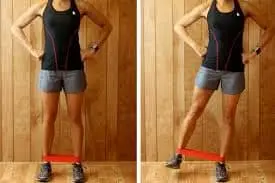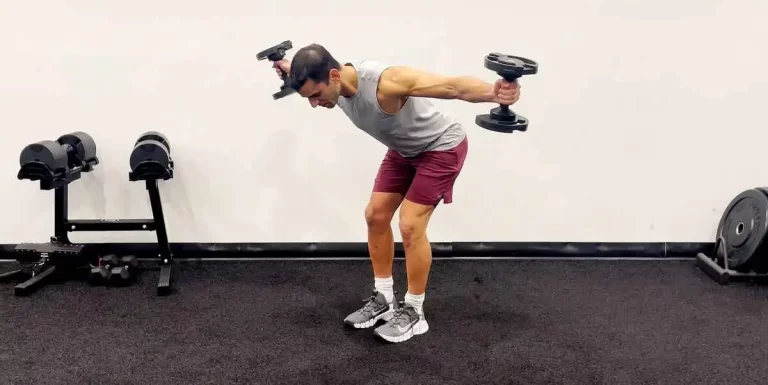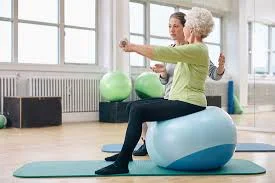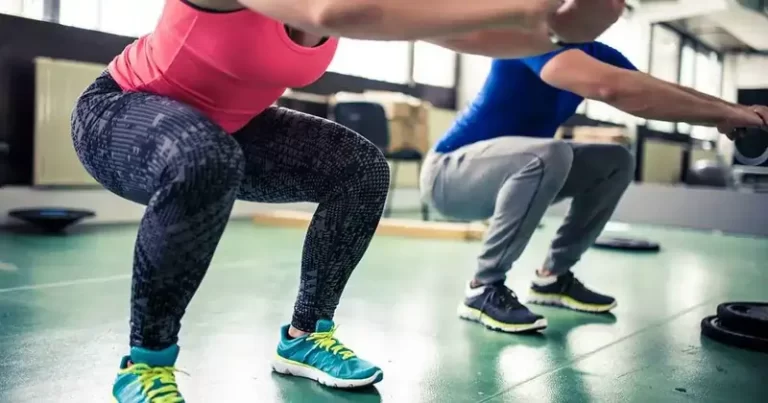15 Best Exercises for Labral Tears of the Hip
Exercises for hip labral tears Improving range of motion, power, and mobility could help in the treatment of hip labral tears.
Along with keeping proper posture and awareness of your movements, you can help reduce pain while improving your general health by including these exercises in your daily routine. Never begin a new exercise program without consulting a physical therapist, especially if you have a particular injury or health issue.
What is a Labrum?
The “Hip Labrum,” or fibrous, cartilage-encircling Acetabular Labrum, encircles the hip socket. Its major function is to stabilize the lower body and hold the thighbone in place. The labrum functions as a rubber seal to promote movement and regulate the amount of fluid in the joint when it is healthy.
The leg may rotate and move in a variety of planes because of the complex hip joint. Ignored labrum tears can be extremely painful and result in severe hip instability.
How Do Hip Labral Tears Develop?
As an example, consider the hip joint. Acetabulum is situated at the apex of the femur, which is the ball that makes up the shinbone. When the soft tissue covering the acetabulum becomes damaged, a labral tear develops.
The labrum makes it easier for the femoral head to glide smoothly inside its socket. This relieves pain and facilitates painless pelvic movement. It also acts as a cushion to maintain the ball and socket’s separation and interaction.
Repeatedly engaging in twisting and turning sports and long-distance running are common causes of hip labral tears. The degree of symptoms varies.
Causes:
A hip labral tear may result from multiple sources, including repetitive strain, unplanned or violent movements, or actual joint injury. In certain situations, untreated structural defects of the bones can lead to issues that worsen with time.
- Injury
The hip joint itself can suffer damage that results in hip labral injuries. This can happen to those who play activities that need strong, repeated movements, such as golf, football, hockey, and soccer.
- Repeating Motions
A larger risk applies to athletes and anyone engaged in activities involving repeated hip movements.
- Structural Conditions
Additional causes of hip labral tears include illnesses that cause abnormal hip mobility. The femur head does not fit into the socket correctly in femoroacetabular impingement (FAI). Range of motion restriction and persistent groin pain may result from this ill-fitting garment. For certain patients, it can result in osteoarthritis if treatment is not received.
- Degenerative conditions
Chronic (long-term) degeneration of the interarticular cartilage results in osteoarthritis. As time passes, the cartilage ages more slowly and is more prone to tearing. Having overweight or older may increase your risk of developing osteoarthritis. Osteoarthritis patients typically experience pain and stiffness in multiple joints, including the hip and knee.
Signs and symptoms:
Hip labral tear symptoms are simple to identify. The lower back, hips, hamstrings, and abdomen are common places for the ache to radiate after starting down in the groin. Even during ordinary, stress-free activities like walking, twisting, or sitting in a car or at a computer, patients frequently experience pain.
Among these indications are:
Weakness in the muscles surrounding the hip.
- Pain
Hip pain is a typical symptom. Usually felt in the hip or groin region, it may also cause a sharp, deep ache.
- Restricted Range of Motion
Activities like bending, twisting, or rotating the hip may be uncomfortable because labral tears can reduce the hip joint’s range of motion. stiffness in the hips when moving at full range.
- Pinching, irritating, or hip-catching sensation
Many persons with labral tears express feeling like something clicks, pops, or stops when they move their hip. The flexion, abduction, and external rotation of the knee in an extended and bent position cause pain when attempting to raise a straight leg against opposition.
Physical Therapy’s Advantages:
Despite the etiology, a rupture of the cartilage labral ring can have a significant effect on the hip’s stability and functionality.
As a result, it can be quite beneficial when working together with a musculoskeletal specialist like a physical therapist and a movement specialist.
- Create an exercise schedule that will help in your speedy recovery and return to your daily activities.
- Support in your recovery in the event that arthroscopic hip surgery comes out to be necessary.
Exercises for Labral Tears of the Hip:
During typical movements, the hip’s ball and socket joint is stabilized by a ring of cartilage known as the labrum. Although these ailments can affect anyone, athletes are more likely to experience them owing to overuse, trauma, or muscular imbalances. Whether or not surgery is required, your recovery from a sprained hip depends on the activities you do to encourage healing and circulation.
Butterfly pose
- Start by sitting on the floor.
- Keeping your ankles in place, push your feet closer together.
- After that, move your feet together until your toes touch.
- Your hands should be wrapped around your ankles.
- Pull the knees as close to the floor as you can with minimal effort.
- Hold this position for a few seconds.
- Then return to your neutral position.
- Then relax.
- Perform this exercise five to ten times.
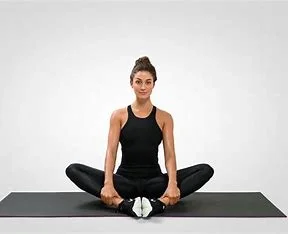
Kneeling Hip Flexor Stretch
- Maintaining that foot flat on the floor, extend the other leg out in front of you while kneeling on the injured leg.
- When you need to, you could put your hands on your front knee for stability.
- Maintain the upper body straight.
- Then, push yourself forward until you’re experiencing stretch.
- Hold this posture for a few seconds.
- Then return to your neutral position.
- Then relax.
- Perform this exercise five to ten times.
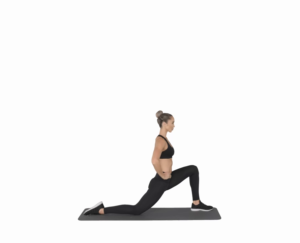
Piriformis stretch
- Start by lying down on the ground surface.
- Make sure to flex each knee.
- Keep your feet level with the ground.
- Currently, place your right ankle over your left leg.
- Cover the left leg with your hands.
- Pull your leg in close to your upper body.
- Hold this posture for a few seconds.
- Then return to your neutral position.
- Then relax.
- Perform this exercise five to ten times.
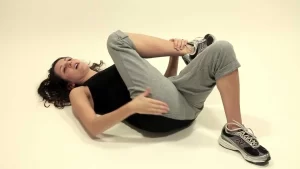
Hamstring wall stretch
- Look for an open door.
- Check that your left leg is fully extended and your lower back is aligned to the floor.
- There should be space for the left leg to pass through the door opening.
- Bring your right leg into line with the wall next to the door.
- After adjusting the body’s distance from the wall, the right leg should feel slightly compressed.
- Hold this position for a few seconds.
- Then return to your neutral position.
- Then relax.
- Perform this exercise five to ten times.
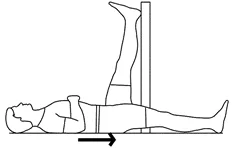
Calf Stretch
- Start with facing a wall.
- Ensure that you perform the exercise using the correct posture.
- For the duration of the process, hold onto the leg that needs stretching.
- Continue to walk forward while keeping your knee straight on the part you are extending until your knee or calf feels stretched.
- Hold this position for a few seconds.
- Then return to your neutral position.
- Then relax.
- Perform this exercise five to ten times.
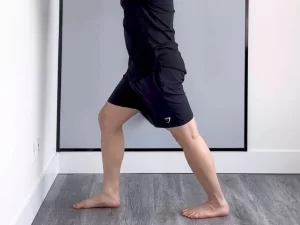
Quadriceps Stretch
- Reach out and grasp a table, countertop, door frame, or wall while keeping your feet hip-width apart.
- To grip onto your ankle, bend your knee to get it back toward your butt.
- Once your balance is done, gradually advance your foot toward your butt until your front thigh feels fully extended.
- To hold the stretch, you need to keep your posture straight and upright.
- Hold this position for a few seconds.
- Then return to your neutral position.
- Then relax.
- Perform this exercise five to ten times.
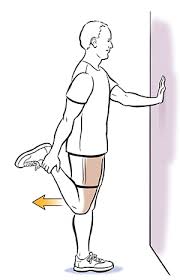
Straight Leg Raise
- Make yourself comfortable first by resting on a table or the floor.
- Now bend your knee slightly.
- Next, carefully raise your leg.
- While the other knee stays straight.
- Hold this position for a few seconds.
- After that, lower your leg.
- Then return to your neutral position.
- Then relax.
- Perform this exercise five to ten times.
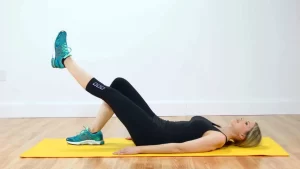
Standing hip abduction
- Maintaining a straight posture and placing your feet shoulder-width apart are essential.
- Reach out with your left arm and grab a sturdy item, like a chair or table.
- Raise your right leg out to the side while keeping your feet together.
- Refrain from bending your hips; instead, keep your left leg upright.
- Hold this position for a few seconds.
- Then return to your neutral position.
- Then relax.
- Perform this exercise five to ten times.
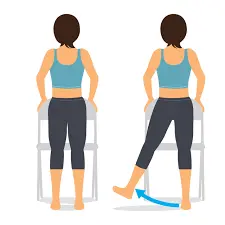
Prone leg raise
- Moving your head to one side while lying face down might be more comfortable for you.
- Maintaining your hips level, lift one leg slightly off the ground.
- Now, contract your buttocks and stomach muscles.
- Hold this position for a few seconds.
- Lower your leg.
- Then return to your neutral position.
- Then relax.
- Perform this exercise five to ten times.

Seated Leg Adduction
- The first step is to sit down on the chair.
- Make sure you have a little cushion or exercise ball between your knees.
- For stability, the upper body must remain static and the core must be active.
- Push your knees together and squeeze into the ball or cushion, which is positioned between them.
- Hold this position for a few seconds.
- Then return to your neutral position.
- Then relax.
- Perform this exercise five to ten times.
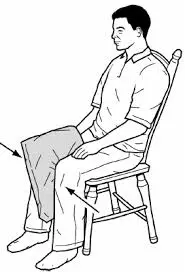
Standing Hip Circles
- Begin by standing comfortably on the ground.
- To help you balance better, place your hands on your hips.
- To begin the exercise, slowly push your hips forward and to the right as they are rotating in a circle.
- For more circular hip rotation, rotate your hips to the right, then back, then left, and finally forward again.
- Swing your hips many times, in a clockwise and counterclockwise direction.
- Then return to your neutral position.
- Then relax.
- Perform this exercise five to ten times.
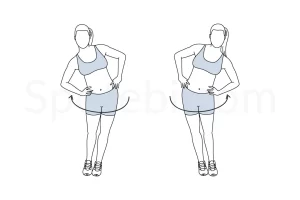
Standing hip flexion
- Maintain a straight standing posture.
- With arm extended forward, grasp a sturdy object for support, like a table or chair.
- Your right knee should be gradually raised to hip level or as high as feels comfortable.
- Hold this position for a few seconds.
- Then return to your neutral position.
- Then relax.
- Perform this exercise five to ten times.
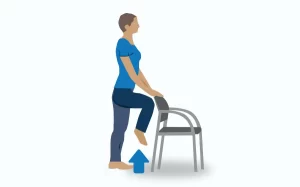
Fire hydrants
- Get down on your knees on the floor first.
- Look down and contract your core muscles.
- After that, you must extend your left leg 45 degrees off the ground.
- Maintain a 90-degree bend in your knee.
- Maintain a stable pelvis and core.
- The only movable component in your body should be your hip.
- Return your leg to the beginning position to complete a single repetition.
- Then return to your neutral position.
- Then relax.
- Perform this exercise five to ten times.
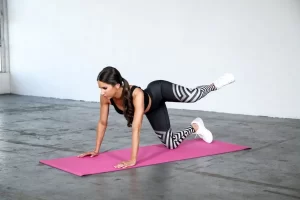
Single-leg glute bridge
- Initially, person should lie down on the ground.
- Now bend your knees.
- Raise one leg straight up into the air upward as you can.
- Apply pressure by putting your body weight via the leg that is on the floor.
- Maintain a straight hip position.
- This form ought to make your entire thigh and buttocks feel exhausted.
- Hold this position for a few seconds.
- Then return to your neutral position.
- Then relax.
- Perform this exercise five to ten times.
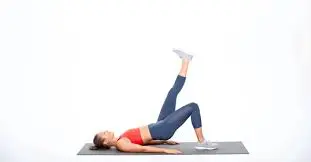
Dead bug
- To begin, lay down on the floor in a relaxed supine position.
- Then your knees bent 90 degrees.
- After that, lift your feet off the ground and reach your arms up to the ceiling.
- Stretch the opposing leg toward the floor and reach one arm straight back by your ear.
- Pulling your right arm back and extending your left leg toward the floor is one process to get started.
- Without contacting the ground, try to maintain your right arm and left leg a few inches off it.
- Stay flat on the floor for a few seconds by contracting the muscles in your abdomen.
- Take care not to arch your back.
- Then return to your neutral position.
- Then relax.
- Perform this exercise five to ten times.
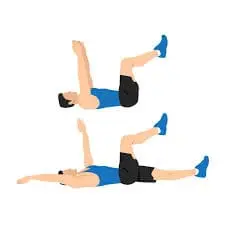
What safety precautions are required when exercising?
- Ensure that every piece of equipment you use has been adjusted correctly.
- Refrain from engaging in difficult activities.
- Stretching should be done as many times as suggested by the exercise’s guidelines, both before and after sessions.
- Use gentle stretching and bending motions.
- To increase your range of motion and encourage relaxation while training, dress comfortably and loosely.
- Between your workouts, give yourself a rest.
- While working out, maintain a straight posture.
- Keep yourself hydrated.
- As soon as the pain becomes severe, exercise should be discontinued.
- Typically, stretching the muscles in your stiff joints is difficult. Stretch and exercises should not hurt you or give you the impression that someone has wounded you because they are terrible for you and exacerbate your problem.
When are you going to stop working out?
- Fever
- Headache
- If exercising hurts, you ought to stop.
- Intense muscle burning.
- You’re not feeling well.
- If there is pain or numbness.
Avoid the following workouts if you have a torn hip labrum:
Physical therapy is a possible recommendation from your doctor for your torn labrum. This typically means doing exercises that strengthen the muscles that support the hips the quadriceps, gluteal muscles, and hip flexors. These movements may help alleviate pain, widen the range of motion, and lessen stiffness.
But not every activity is good for a labrum injury. As you recover from a hip labral tear, you should avoid the following kinds of workouts:
- High-Impact Activities
High-impact exercises like plyometrics, running, and leaping can aggravate the injury in addition to causing pain and discomfort.
- Sports Including Twisting Moves
Sports that require a lot of bending and turning, such as soccer, hockey, football, tennis, golf, ballet, and tennis, might exacerbate a hip labral rupture. Motions that twist might exacerbate the labral tear and cause tiny tears in the labrum.
- Deep, Static Stretches
Although deep, static stretches are usually a part of therapy, your healthcare professional may encourage you to concentrate on dynamic poses instead. Such stretches, which entail holding the stretch for extended periods, can exacerbate discomfort and stiffness by pulling on injured tissue and compressing the tear against other hip joint structures.
- Practicing Heavy Lifting
Excessive weightlifting, particularly in hip-centric exercises or when the hips must support a large amount of the weight, might exacerbate the problem. Sports requiring a lot of hip rotation and deep squatting are two examples of motions that your doctor or physical therapist could advise you to stay away from.
If you’d like, you might be able to resume weightlifting after a corrective exercise regimen. When your hip labral tear heals, your doctor or physical therapist will give you advice on what exercises to undertake in the interim and how to gradually resume lifting.
Prevention:
Hip labral tears can be avoided by lowering the risk of injury, altering actions to protect the hip joint, and keeping the hips healthy.
These are a few methods of prevention;
- Speak With a Specialist doctor
Getting advice from a doctor or orthopedic specialist on managing and preventing hip problems is advisable if you have structural abnormalities in your hip, such as femoroacetabular impingement (FAI).
- Stay Active and Exercise
Exercise that strengthens and increases hip flexibility regularly may improve hip joint health. Exercises that target the hip abductors, external rotators, and adductors should be included.
- Adjust Equipment Correctly
To lessen the possibility of poor mechanics causing hip problems, make sure that sports equipment, such as bicycles or exercise machines, is correctly suited to your body.
- Maintain a Healthy Weight
An excessive amount of body weight might worsen hip joint pain. preserving a healthy weight and eating a balanced diet may help prevent hip issues.
- Use the Correct Form
Adopt correct body mechanics and form when playing sports or going about your everyday business. Refrain from making unnatural motions or using excessive force, as these actions might cause strain on the hip joint and muscles.
- Stretch and Keep Your Flexibility
You keep your hips flexible by stretching on a regular schedule. Your primary focus should be on stretching your quadriceps, hamstrings, hip rotators, and hip flexors.
- Refrain from Overusing
If you play sports or engage in other activities that require repeated hip movements, you should be very careful about overuse injuries. Take breaks, change up your activities, and allow your body time to recover.
- Keep Your Posture Correct
Sitting correctly relieves unnecessary stress on the hip joint. Keep your hips supported by maintaining the right alignment while standing or sitting.
- Pay Attention to Your Body
Keep an eye out for any indications of hip pain, stiffness, or pain. Get early evaluation and advice from a healthcare professional if you have ongoing hip pain or discomfort.
- Proper Footwear
Put on shoes that are suitable for the tasks at hand. Equal pressure distribution across the hip joint can be facilitated by shoes with strong arch support and cushioning.
Summary:
The labrum is the ring-shaped piece of cartilage that surrounds the acetabulum, or hip socket. A ruptured hip labral tear is the medical term for this type of cartilage damage. Although it mostly affects athletes, anyone can get a torn labrum. Moreover, those with hip structural issues are considerably at risk.
The degree of the damage determines how hip labral tears are treated. Physicians may suggest physical therapy exercises as a means of reducing pain, restoring range of motion, and avoiding surgery for tiny breaks at the cartilage’s edge.
FAQ:
Can someone with a hip labral tear exercise?
When exercising for a hip labral tear, people should proceed with caution and seek medical advice or physical therapy supervision. Certain workouts may help promote recovery, while others may exacerbate the problem.
Which exercises should I avoid doing if I have a labral tear in my hip?
Exercises that require a lot of resistance, high-impact movements, or prolonged hip flexion are generally not recommended. Running, severe squats, and forceful lifting might exacerbate the rupture.
Does engaging in physical activity help a hip labral tear heal?
Yes, specific exercise regimens might play a major role in the healing process. Exercises aimed at improving hip stability, mobility, and strength hasten healing and reduce pain.
Should I stretch if I have a hip labral tear?
Although stretching offers many benefits, it must be done carefully and under supervision. Focus on light stretching to release the tension in the muscles surrounding the hip joint without aggravating the tear.
When I exercise, what signs of a hip labral tear should I watch out for?
Exercise should be stopped if your hip pain, stiffness, or clicking/catching sensation gets worse.
Is it possible to go back to my previous level of physical activity after a hip labral rupture?
Depending on the extent of the tear and your recovery, it may be possible for you to return to your previous activity level with the appropriate therapy and guidance from your healthcare team.
References:
- On October 12, 2023, Patel, D. 37 Powerful Activities for Hip Labral Injuries in Physiotherapy Samarpan. Physiotherapy Clinic in Samarpan. Which workouts are most effective for hip labral tears? https://samarpanphysioclinic.com/
- Sapienza, K. ( November 30, 2021). Hip Labral Tear: Integrative Spine & Sports – 8 Tried-And-True Exercises To Reduce Hip Pain. Sports & Integrative Spine. Hip ligament tear at Integrative Spine and Sports, Inc.
- What Exercises Can I Perform Without Risk If I Have a Torn Labrum? (No date). https://www.americanhipinstitute.com/blog/exercises-to-avoid-when-having a torn ligament in 40196.html
- Bone and Joint Clinic and Duplantier, N. L. (n.d.). Rehabilitation Procedure. Hip-Labral-tear.pdf can be found at https://boneandjointclinic.com/wp-content/uploads/2016/11.
- Image 10, Raleigh’s Orthopaedic Specialists. (As of now). Exercise Program for Physical Therapy. /uploads/pdf/Hip_Knee_AROM_Sitting.pdf Orthonc
- Image 11, Daisy. June 5, 2021c. Hip Circles | Exercise Guide with Illustrations. SPOTEBI. https://www.spotebi.com/exercise-guide/hip-circles/

